Essays
The Urban Observatory of Beirut
For a Polysemic Reading of Both City and Territory
The urban observatory has just celebrated its twentieth anniversary
English translation by W. Parramore
After four years in Damascus, the Institut français du Proche-Orient (Ifpo) urban observatory has returned to Beirut since October 2011, where it was created exactly 20 years ago, in 1991. Beyond the purely factual description heading its institutional page, the department itself is relatively atypical, and this begins with its history.
Indeed, initially it was a Franco-Lebanese reflection group linked to the CERMOC (Center of studies and research on the contemporary Middle East) devoted to the observation of an urban space in distress. It had been created in the wake of the Civil War, having as its goal to 'reflect upon the reconstruction of Beirut … and to uncover the different readings the city's space revealed and the meanings attached to these.'[1]
The reconstruction projects, whoever they emanated from, whether these were public institutions (Conseil de Développement et de la Reconstruction, Direction Générale de l'Urbanisme, Municipalité and Mohafaza), foreign consultants (World Bank, Institut d'Aménagement et urbanisme de la Région Île-de-France … ), or different communitarian institutions, political parties, or even militia, were all seen as many representations of the urban space: 'most often as attempts to legitimize their political, ideological or military options, these representations are not the fruit of chance: they are part of a symbolical representation of urban space of which they reveal the hidden codes'.[2]
At its very inception the polyvalence of the group's approach was at the core of its philosophy, as is shown by the composition of the founding team itself, which counted such fields as urbanism and architecture but also human and social sciences (history, geography, anthropology, sociology) and finally economy.[3]
With time, this legacy from the war reading, in which the city saw itself primarily as the theatre of all the conflicts with their consequences, has become more diverse. On the one hand, the Observatory was institutionalized in 1993 as a permanent research structure belonging to the Ifpo (the erstwhile CERMOC), inside the Department of Contemporary Studies. On the other, given its atypical format - it is constituted of only one person, assisted by assistant researchers - it bears the imprint of a personality or a professional trajectory, yet remains faithful to its original polyvalence. For instance, with Jean-Luc Arnaud, a city historian, a specialist in the late Ottoman period, the studies led by the Observatory have extended to the entire agglomeration of Beirut. For his part, Eric Huybrechts, architect and urban planner, worked on the urban spaces throughout the country while launching the project of a socio-geographical Atlas of Lebanon, which was pursued and co-directed later by Éric Verdeil, geographer, and the author of a thesis on the urban planners of Beirut. The merging of the different contemporary research units into one sole body, Ifpo, has in the end allowed for research on city and territorial planning in the Middle East in general, with the collaboration of full-time researchers or associate researchers in Syria, Jordan or Palestine, as well as the creation of an online publication, 'Cities and Territories of the Middle-East'[4] by Fabrice Balanche, a specialist in the field of the political geography of Syria and Lebanon.[5] In the autumn of 2006 the political context in Lebanon led to the Observatory's being removed to Damascus, where Valérie Clerc-Huybrechts, an architect, continued to lead from Syria research concerning the habitat of the poorer populations, a part of her thesis bearing on the 'irregular', also called 'illegal' or 'unformal', neighbourhoods of Beirut. This research has also irrigated many Institute publications.[6] Finally, recently, the opening of an Ifpo branch in Iraq, at Erbil, in Iraqi Kurdistan, has consecrated the Ifpo's accession to a regional status with the recruiting of its new head, a specialist in contemporary urban history familiar with the Iraqi field, author of a Ph.D thesis on the modernization of Baghdad in the twentieth century.[7]
Patrimonialization of the modern city as content; a 'close-up' reading as fieldwork
Today, 20 years after the Observatory's creation, the patrimonial dimension of the 'modern' urban is at the heart of our research programme. By 'patrimonial', one means a cultural, historical, social, political, symbolic construction. Its mechanisms, codes and effects on the city are to be examined and questioned, as well as the relationships between memory and society project. All these aspects play a major role in the creation of urban identities.
The details of the Observatory's current research program can be found on the Ifpo site, defining the articulation between built heritage, urban fact, human sciences and social sciences.[8] I have chosen to elaborate here on a particular aspect of my research method, which I have transposed from the terminology of the art historian Daniel Arasse:[9] I call it a 'close-up' reading of the urban, as the basis, on the one hand, of a polysemic interpretation of the city that is greatly inspired by the works of André Corboz;[10] and on the other, as the visual equivalent of what Carlo Ginzburg theorized under the term of 'micro-history'.[11] It is illustrated by multiple hypotheses or questionings, which in conformity with the original vocation of the Observatory, one can decode from these 'close-ups', as in the following short examples of compared readings between different territories taken from my recent travels.
Commented Pictures
All photos by Caecilia Pieri
An official campaign, national unity and the image of women in Iraq
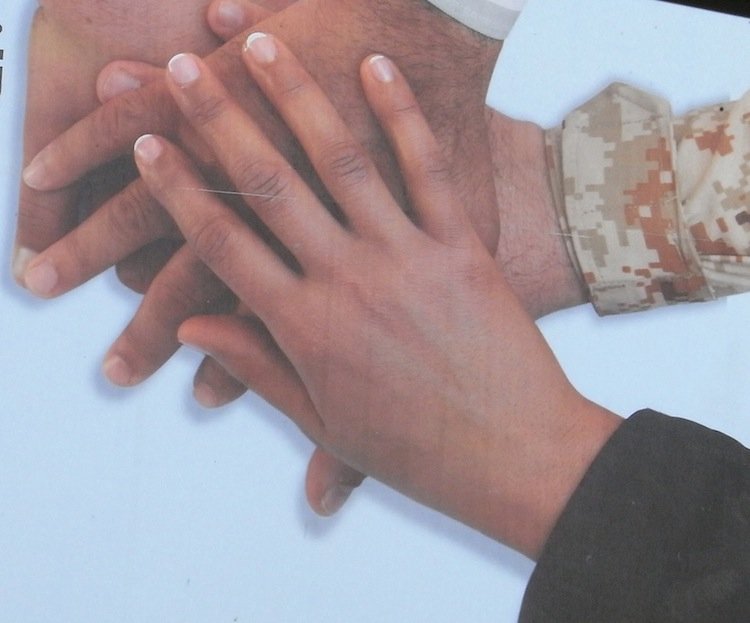
Picture 1. A poster in Baghdad
This poster dated March 2010, which was still visible in January 2012, promotes the unity of a population through its different components. At first glance, it appears to be neutral, in that it displays four superposed hands (three masculine hands, one feminine) in a gesture of union. A second glance allows one to deduce the importance of the army (one of the sleeves is that of a military uniform) but also society's growing sectarianism, given that the woman's black sleeve seems to be, although very subtly implied, that of a traditional abaya.

Picture 2. Fresco at the Adhamiya Olympic Club in Baghdad
This poster will be compared to the 1972 Ministry of Sport's commission to Faïq Hassan, one of the pioneers of modern Iraqi painting, to decorate the hall of the Olympic Club,[12] situated at the entry of Adhamiya, the neighbourhood built around the famous Sunni sanctuary of Abu Hanifa.
The fresco, if not remarkable by its quality, is remarkable by its subject matter: popular unity is represented by a multitude of young men and women, engaging in all types of sports, but also society games (chess), arts, music, painting (with a nude female model) … in a sort of playful version of the theme of the 'Mechanical Arts',[13] something that would be quite inconceivable today. One may wonder how it is that this fresco is still in place? The most probable answer is that this equipment has been abandoned and thus the fresco has been forgotten. Here again a patrimonial issue brings us directly back to politics: during a visit with the French Embassy organized on the 23rd of January, the club's head manager immediately began vituperating against the current deciders, bitterly complaining about the advanced state of dereliction this erstwhile prestigious equipment[14]is in now: sewers now flow across the playing fields, the total absence of credits for the least repair …
Urban panoramas 1. Rules, deregulation, speculation

Picture 3. Amman, May 2010
The picture shows the urban density and the anarchic urban sprawl on the hills, but also the existence of rules applying to constructions and their height, volume and materials. The picture was taken from Wild Jordan, the showcase of the Royal Society for the Conservation of Nature, an association working for the preservation of ecological heritage and the promotion of the local arts and crafts know-how, a model Iraq would be well-inspired to import.

Picture 4. Beirut, Sodeco sector, autumn 2011
Anarchy of constructions, absence of public services in electricity and water distribution (water tanks on rooftops, despite the potential in hydraulic resources); in the background, two key elements for the reading of Beirut's urban landscape, yesterday, today or tomorrow: the sea, the Marina de Solidere tower.

Picture 5. Beirut, in the vicinity of Hôtel-Dieu, autumn 2011
Over-exploited, aggressive built work in a vulnerable topography. On the other side of the Achrafieh hill, a few hundred metres from there, inefficiency in terms of security has indirectly caused the deaths of 27 people following the collapse of a decrepit building in Fassouh on 15 January 2012.
Urban panoramas, 2. Tastes, colours and materials, the conquest of the Iraqi market by China
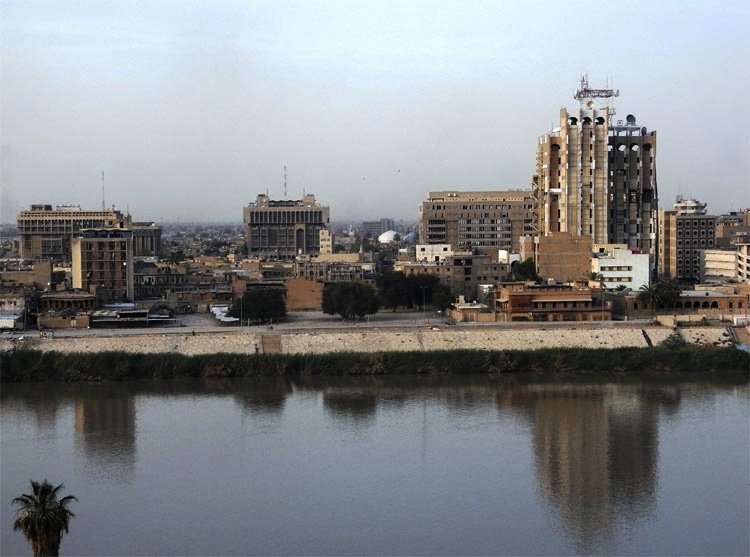
Picture 6. Baghdad, Sinak area, Eastern bank of the Tigris, May 2010
Until 2010, Baghdad's urban landscape was, despite a modern architectural vocabulary, of a surprising chromatic harmony due to the millenary use of brick for vernacular constructions. At the centre, in the background, the Municipality building (Hisham Munir, architect, 1982); to the right in the foreground, the telecommunications tower (Rifat Chadirji, architect, 1972); one of the first targets of American bombing in 2003, it is currently being rebuilt.
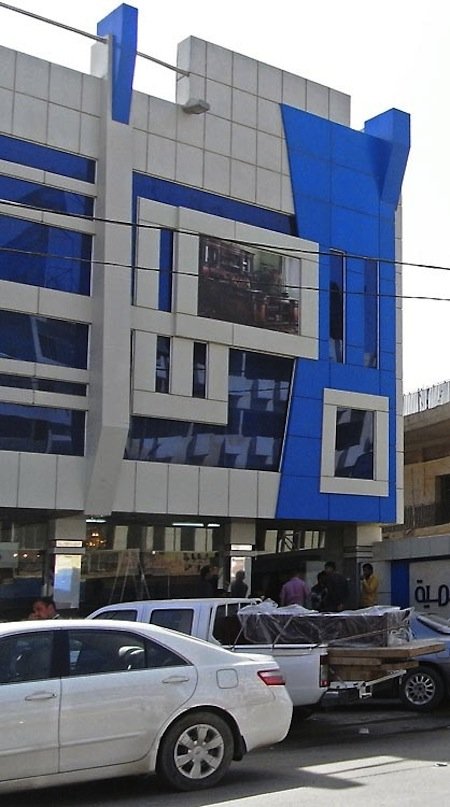
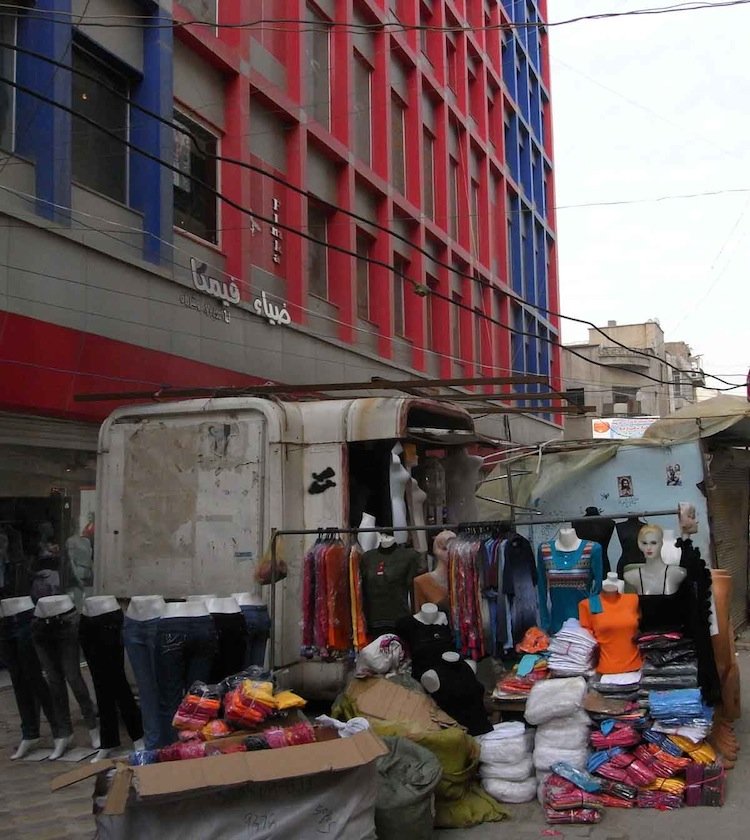
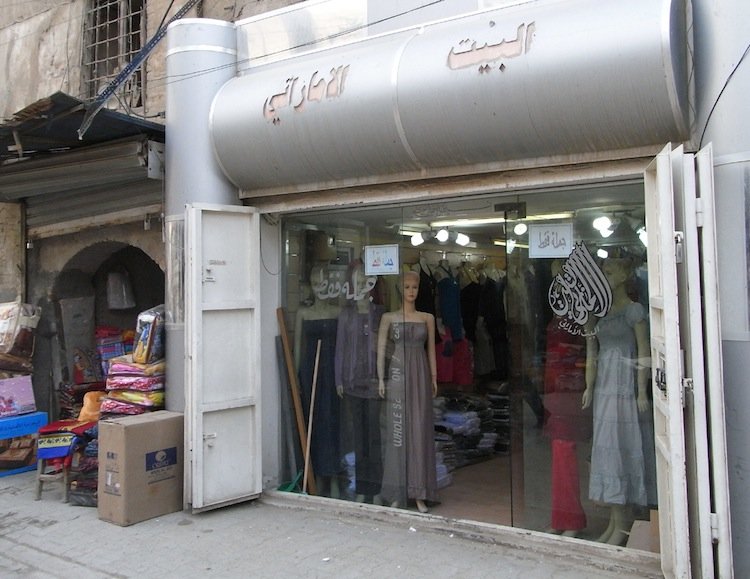
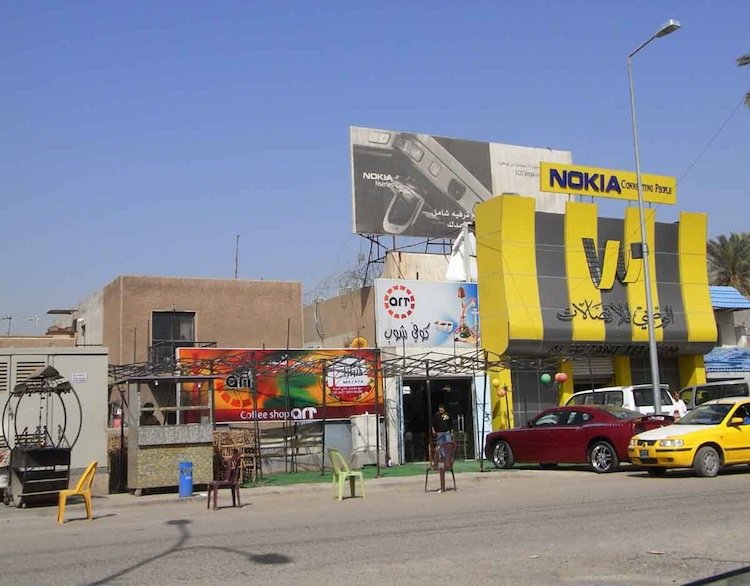
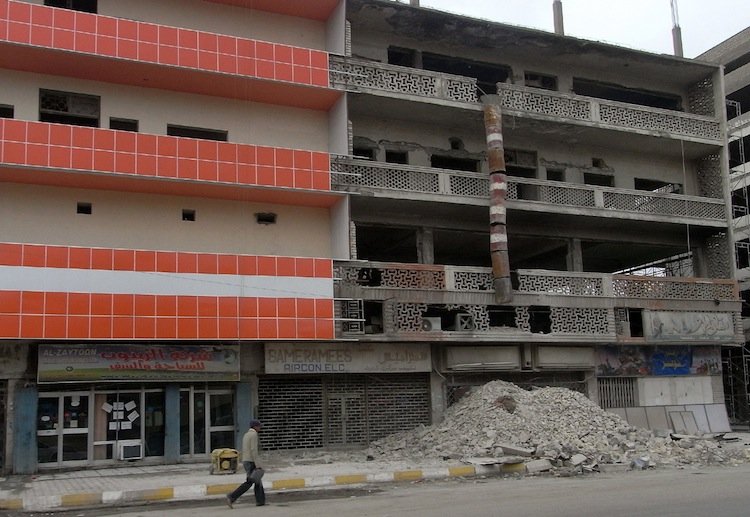
Pictures 7, 8, 9, 10, 11. Baghdad, February 2011
Since 2010, Chinese aluminium has conquered a quasi-captive market. Following the repeated political exodus since 1980, 1991, 2003, and 2005-08, the residential sectors of the hyper-centre, including the still existing Ottoman neighbourhoods (for instance facing the Khan Pasha) are now filled with vacant or squatted houses; they are now turning into second-rate and characterless shops, as garish as the commercial or industrial zones situated outside larger cities in Europe. In this respect, Baghdad is now undergoing a qualitative degradation and a functional transformation of its centre. Nevertheless the female dummies in the two shop windows in the pictures above, seen sporting modern feminine fashion, show that in the commercial sectors at least one is still far from the chaste abaya discreetly evoked in the official posters.
Socio-confessional marking of the domestic space in Baghdad
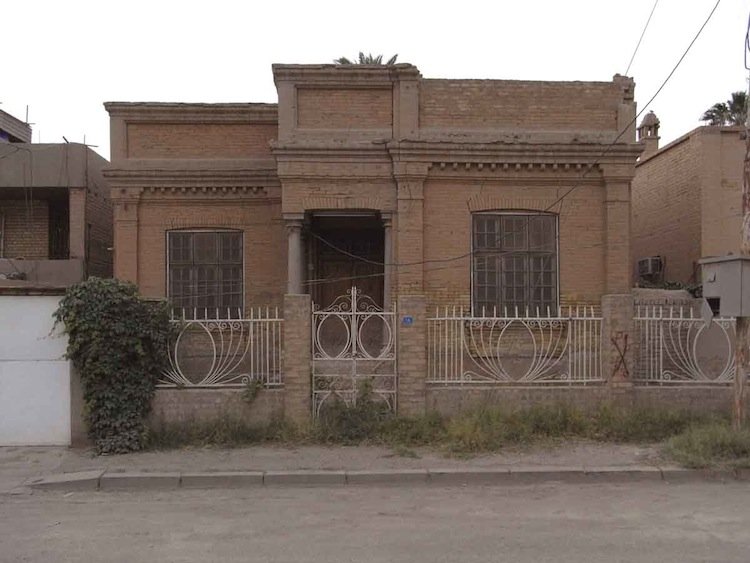
Picture 12. A view of a residential street near Adhamiya, April 2009
This house, photographed a week before its destruction, was completed at the end of 1935. It is emblematic of the vocabulary produced by the first urban regulations: aligned heights, housing built at a distance from the street, size of the building plots, etc. The elegant wrought iron peacock feather motif is one of the most recurrent at that time in Baghdad.

Picture 13. Same place, January 2012
In the house built since then, everything is done to catch the eye: an additional floor breaking the alignment of the neighbouring houses; garish construction material – imitation marble stone – contrasting with the traditional and refined discretion of the monochrome urban ambience due to brickwork; and finally, although the celebrations of the Arba'in[15] are over, a flag with the effigy of Imam Hussein remains planted, for all to see, at the top of the roof-terrace, the only one of its kind in the street. Bordering the Adhamiya sector, a dominantly Sunni sector, this neighbourhood is experiencing the arrival of a new Shi'i middle class, the sign of the possibility of a certain mixing between equivalent income levels. The Iraqi sociologist Ali al-Wardi, notably the theoretician of the opposition between hadara (urban society) and bedawa (tribal society)[16] would, what's more, have found matter for discussion in the disenchanted opinion of some local passers-by: 'These new inhabitants are peasants. They have no taste … '
Knowledge and awareness of modern heritage are not equally shared

Picture 14. Damascus, Bab Sharqi sector, December 2009
From a heritage perspective and despite the gentrification of the old centre of Damascus, the Bab Sharqi sector has achieved a form of balance between the preservation of different historical strata,nineteenth but also twentieth century, what with a local population maintained in its original neighbourhood as well as a tourism/ economic enhancement policy, which could provide an example both for Baghdad and Beirut. This is noted independently from the fact that both the economy and tourism industry in Syria are affected by the political crisis, which has lasted almost a year now.
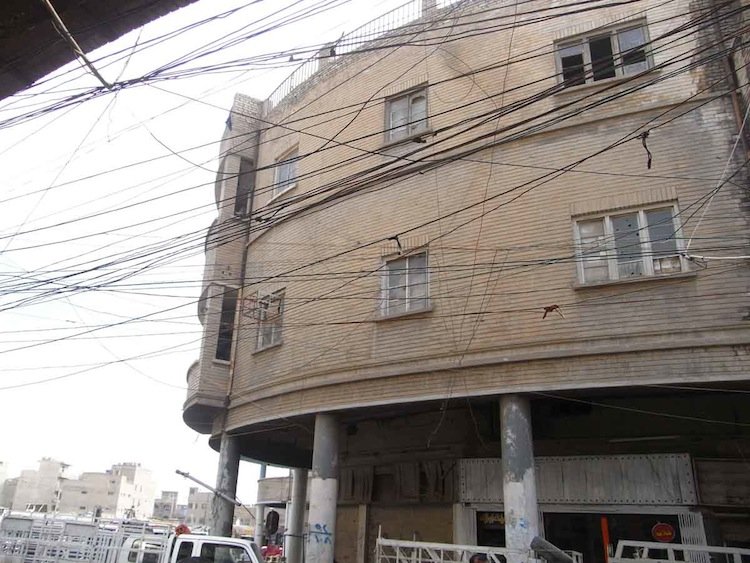
Picture 15. Hafez el-Qadi sector, February 2011
The first wedge shaped three- story pillar supported lots built in the centre of town (1937-38), erstwhile symbols of the modern city and now of its abandon.
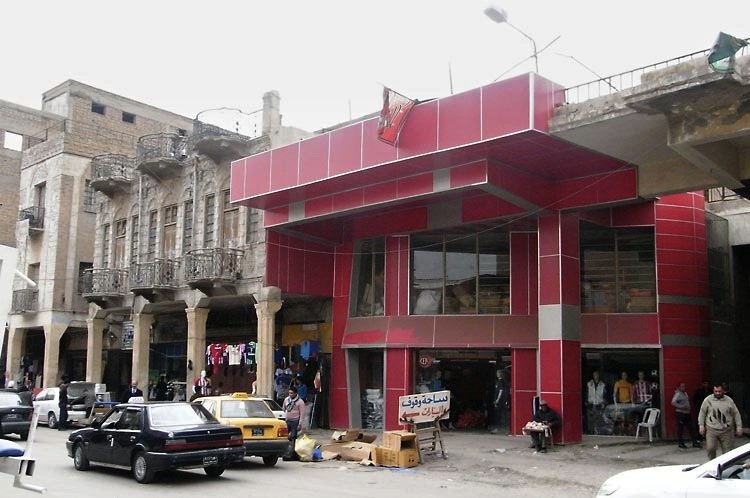
Pictures 16. Nearby, the Rashid Street, which used to be the elegant artery of Baghdad in the 1970s: the sector is theoretically preserved, but the Chinese Alucobest is beginning to spread its unabated ugliness, unchecked, at least up to now.

Picture 17. Beirut, Damascus Street, January, 2012
Polysemic picture: middle class, refined, hybrid architecture of the French mandate period, to be demolished shortly; the stigmata of the Civil War; real estate speculation; and finally communication through pictures, commented further down along the street, in two languages, for the future residence will be called 'Rudamas' and its promoter states: 'We build on values' … Which values? Values as in financial values, most probably, but not in terms of architectural or urban design quality.
The contradictions of Beirut


Pictures 18 and 19. Gemmayzeh, May 2011
Two visions separated by only a few metres …
Note: Original text by Caecilia Pieri published 3 February 2012 on Ifpo. English translation by W. Parramore originally published at Ifpo on 21 February 2012. Copyright Caecilia Pieri, Institut français du Proche-Orient, 2012.
[1] 'Projet pour un observatoire de la reconstruction de Beyrouth,' unsigned internal note, 1991, 1-2. I wish to thank here Basile Khoury, in charge of the Ifpo map collection, for having communicated these succinct but precious documents regarding the genesis of the department.
[2] Ibid.
[3] The work team was made up by, in France, Fouad Awada (urban planner, IAURIF, Paris) Wafa Charafeddine (urban planner), May Davie (geographer, URBAMA, Tours), Franck Mermier (anthropologist, École d'architecture de Versailles), Jade Tabet (architect), and in Lebanon by Liliane Barakat (geographer, St. Joseph University), Nabi Beyhoum (sociologist, AUB), Makram Sader (economist, Union des Banques Libanaises). Source: the internal note above-mentioned, 5.
[4] The title will probably be re-used in a new editorial project under study.
[5] Fabrice Balanche, Atlas du Proche-Orient Arabe (Paris: Presses de la Sorbonne, 2011).
[6] Amongst which Éric Verdeil et al., Atlas du Liban, territoires et sociétés (Beirut: IFPO, 2007); Valerie Clerc-Huybrechts, Les Quartiers irréguliers de Beyrouth, une histoire des enjeux fonciers et urbanistiques dans la banlieue sud (Beirut: IFPO, 2008); Eric Verdeil, Beyrouth et ses urbanistes, une ville en plans (1946-1975) (Beirut: IFPO, 2011).
[7] Caecilia Pieri, Of Brick, of Palm-Tree and of Concrete: Strategies of the Urban Modernity, Baghdad 1921-1958 (Ph.D. diss., L'Ecole des Hautes Etudes en Sciences Sociales, 2010).
[8] Among the projects currently being studied: the beginning of a research project on the Furn el-Chebbak neighbourhood and the preparation of a conference on the theme 'Main basse sur la ville' ('a city up for grabs'), both in partnership with the Lebanese University; the Beit Beirut museum works; actions centreing on the Le Corbusier Gymnasium in the context of the celebrations 'Baghdad capital of Arab culture in 2013'; a partnership with the American University for the coming yearly edition of City Debates.
[9] Daniel Arasse, Le Détail: Pour une histoire rapprochée de la peinture (Paris: Flammarion, 1992).
[10] See: A. Corboz, Le Territoire comme palimpseste, et autres essays (Besancon: L'Imprimeur, 2001); Lucie K. Morisset and Andre Corboz, De la ville au patrimoine urbain, histoire de forme et de sens (Quebec: Presses de l'université du Québec, 2009).
[11] Carlo Ginzburg, Le Fromage et les vers. L'univers d'un meunier frioulan du xvie siècle (Paris: Aubier, 1980); Carlo Ginzburg and Carlo Poni, 'La micro-histoire,' Le Débat (1981).
[12] The pure Art Deco style building was the first Iraqi sports club, built in 1938 under the supervision of the first Iraqi architect to obtain his degree in Europe, Ahmad Mukhtar Ibrahim.
[13] Architecture, sculpture, painting, and goldsmith's art by opposition to the classification of knowledge during the Renaissance inherited from the Greek antiquity, to the said liberal arts: philosophy, grammar, mathematics, music, astronomy, etc.
[14] A club for the elite, including the king himself, who inaugurated it, hence its original name: 'The Royal Olympic Club'.
[15] The 40 days of mourning which take place after the Shi'i ceremony of the 'Ashura, marking the death of the Imam Hussein.
[16] See: Dirasa tabi'a al- ijtima' al- 'iraqi (Beirut: Al-Warraq, 2008).















